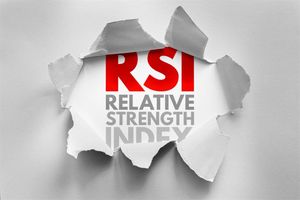
The financial world is holding its breath as the Federal Reserve gears up for its mid-September 2025 policy meeting, with an overwhelming market consensus pointing towards a 25-basis-point interest rate cut. This highly anticipated move is largely predicated on the crucial August jobs report, set for release on September 5, which is widely expected to confirm a softening in the U.S. labor market. Investors, economists, and policymakers alike are scrutinizing every piece of economic data, as the Fed navigates a delicate balance between taming persistent inflation and averting a significant economic slowdown.
This potential rate reduction would mark a significant pivot in monetary policy, signaling a possible end to the tightening cycle that has characterized recent years. The decision, if it materializes, will have profound implications for borrowing costs, corporate earnings, and the broader economic trajectory, affecting everything from housing markets to the profitability of public companies trading in the market. The differing views among analysts highlight the complexity of the current economic landscape, where robust nominal GDP growth coexists with signs of a weakening labor market and inflation still above the central bank's comfort zone.
The August Jobs Report: A Catalyst for Change
The stage for the Federal Reserve's imminent decision was largely set by a series of economic indicators, most notably the August 2025 U.S. nonfarm payrolls (NFP) report. Following a July 2025 NFP report that disappointed with a modest 73,000 job additions—well below the 110,000 forecast—and significant downward revisions to prior months' data, the market is bracing for another subdued August report. Economists anticipate around 75,000 new jobs for August, potentially pushing the unemployment rate up to 4.3% from July's 4.2%. This consistent underperformance in job creation, reinforced by indicators like consumer outlook on the labor market and small business sales, underscores a clear softening.
This weakening labor market, juxtaposed with inflation that, while moderated from its 2022 peak, remains above the Fed's 2% target (with core inflation at 2.8%), presents a challenging dilemma for the central bank. The Federal Reserve's dual mandate of price stability and maximum sustainable employment dictates its actions. On one hand, persistent inflation, potentially exacerbated by new Trump-era tariffs pushing the U.S. effective tariff rate to 18.6%, argues against easing. On the other hand, a deteriorating job market provides a compelling case for a rate cut to stimulate economic activity and prevent a more severe rise in unemployment.
The market's expectation for a 25-basis-point cut is remarkably high, with CME Group's FedWatch tool showing a 92% chance, and other sources indicating probabilities as high as 96%. This strong consensus suggests that investors largely believe the Fed will prioritize supporting the labor market given recent trends. Key players involved include Fed Chair Jerome Powell, who has consistently emphasized a "data-dependent" approach, and various Fed governors like Christopher Waller and Michelle Bowman, who have publicly expressed views favoring rate cuts to address employment risks.
Initial market reactions have already reflected this anticipation. Following the weaker July jobs data, bond markets immediately priced in deeper rate cuts, leading to a slip in 10-year Treasury yields. Gold prices (XAU) surged to a record high, bolstered by expectations of a weaker dollar and lower rates. Equity markets, however, saw a mixed reaction, with Wall Street opening September lower across the Dow, S&P 500 (SPX), and Nasdaq (NDX) amidst broader concerns, including a U.S. appeals court ruling challenging the legality of some tariffs. Historically, cyclical value sectors like energy and financials tend to perform well during Fed rate-cut cycles, while the real estate sector has seen some initial declines as U.S. 30-year Treasury yields climbed, indicating a complex landscape for different parts of the economy.
Navigating the Shifting Tides: Winners and Losers in a Lower Rate Environment
A 25-basis-point interest rate cut by the Federal Reserve, while seemingly modest, is poised to create distinct winners and losers across the public market, reshaping corporate strategies and investor sentiment. The primary mechanisms of impact will be seen through changes in borrowing costs, consumer spending power, and the relative attractiveness of different asset classes.
The real estate sector is anticipated to be among the most direct beneficiaries. Lower interest rates typically translate to reduced mortgage rates, making homeownership more accessible and stimulating demand for housing. For both residential and commercial real estate, cheaper borrowing costs spur investment in new projects and make existing mortgages more affordable. Real Estate Investment Trusts (REITs), which often carry substantial debt, will see their financing expenses decrease, improving profitability. Homebuilders and various REITs are thus poised for increased demand, higher property values, and enhanced cash flow, leading to potential stock performance improvements.
Technology companies, particularly growth stocks and those requiring significant capital expenditures for innovation and expansion, are also set to gain. Lower interest rates reduce the "discount rate" applied to future earnings, which significantly enhances the valuation of growth-oriented firms whose profitability often lies further in the future. Cheaper access to capital allows tech giants like Nvidia (NASDAQ: NVDA), with substantial investments in AI infrastructure and chip development, and mid-cap tech stocks, to more economically fund aggressive research, development, and expansion. This can directly improve their bottom lines by reducing interest expenses on debt, fostering a more conducive environment for M&A activity and innovation.
The consumer discretionary sector is another likely winner, as it thrives on consumer confidence and accessible credit. Lower interest rates reduce the cost of various consumer loans—auto loans, personal loans, and credit card debt—directly boosting demand for non-essential goods and services. This increased consumer spending translates to higher sales and revenue for companies in this sector, such as retailers like Crocs (NASDAQ: CROX) and travel companies like Royal Caribbean Cruises Ltd. (NYSE: RCL), particularly for big-ticket items that often require financing. Similarly, highly leveraged companies with significant debt loads, such as AT&T (NYSE: T), will experience substantial relief from interest expenses when rates fall. This directly improves their profitability, frees up capital for growth, and can lead to stock price outperformance. Utilities, such as Vistra Energy (NYSE: VST), Public Service Enterprise Group (NASDAQ: PEG), and NRG Energy (NYSE: NRG), may also benefit as their stable dividend yields become more attractive compared to falling bond yields, drawing income-focused investors.
Conversely, the banking sector, particularly large banks like JPMorgan Chase (NYSE: JPM), Bank of America (NYSE: BAC), and Citigroup (NYSE: C), are likely to face headwinds. While a rate cut might stimulate loan demand, it typically leads to a compression of net interest margins (NIMs)—the difference between interest earned on loans and interest paid on deposits. This can squeeze their core lending profitability as their cost of funds decreases, translating into lower loan revenues. Banks may need to heavily focus on growing their client base and loan volume to offset lower profits per loan. Moreover, companies with large cash reserves or those whose business models rely heavily on interest income from investments will see a reduction in earnings from these holdings in a lower interest rate environment. Their overall profitability will decrease as the yield on their cash and interest-bearing investments diminishes, prompting a need for alternative investment strategies. Finally, fixed-income investors and savers will see lower returns on traditional income-generating assets like savings accounts, certificates of deposit (CDs), and money market accounts, reducing their interest income.
Industry Impact and Broader Implications: A Tectonic Shift in Economic Dynamics
A 25-basis-point rate cut by the Federal Reserve in September 2025 would represent more than just a minor adjustment; it signals a tectonic shift in economic dynamics, with profound implications across industries and the broader global economy. This move would likely align with the Fed's response to an evolving macroeconomic landscape characterized by moderating, yet persistent, inflation, and a cooling labor market, all against a backdrop of modest and uneven global growth.
The decision would underscore the Fed's commitment to its dual mandate, particularly in addressing the softening employment picture. While inflation, at around 2.7-2.8% for headline CPI and 2.8-3.0% for core CPI and PCE, remains slightly above the 2% target, the rising unemployment rate (expected to reach 4.3% by Q3 2025) provides a strong impetus for easing. Globally, economic activity is projected to maintain modest momentum, with some forecasts suggesting a deceleration due to heightened trade tensions and policy uncertainty. A Fed rate cut in this environment would aim to support domestic stability amidst a potentially slowing global economy, including a projected deceleration of the U.S. economy from 2.8% growth in 2024 to 1.5% in 2025, partly influenced by higher tariffs.
The ripple effects would be felt acutely across various sectors. For the banking sector, lower rates are a double-edged sword. While they can stimulate loan demand and increase loan volumes, they often compress net interest margins (NIMs), reducing the profitability from core lending activities. Banks might see increased activity in investment-grade bond issuance and a surge in refinancing, necessitating strategic adjustments to their revenue streams and pricing models. The real estate market, while benefiting from lower mortgage rates that stimulate demand, may not see an immediate panacea to all its challenges, especially concerning high delinquency rates in commercial-backed mortgage securities (CMBS) for office and multi-family properties. Increased competition among homebuyers could also push prices higher, potentially offsetting some affordability gains from lower rates.
The technology sector would continue to thrive as lower interest rates reduce the cost of capital, encouraging increased investment in R&D, expansion, and innovation. This is particularly beneficial for smaller companies and startups, potentially spurring M&A activity as financing becomes cheaper. However, regulatory scrutiny and broader economic uncertainties, despite the rate cut, would remain persistent headwinds. In manufacturing and retail, lower borrowing costs encourage consumer spending, boosting demand for goods and services. Manufacturers would likely see increased orders, while retailers could manage inventory more affordably. Across all sectors, reduced borrowing costs could intensify competition as businesses find it cheaper to invest, expand, acquire, leading to new opportunities for collaboration among partners. Regulatory bodies might also increase their scrutiny of lending standards in financial institutions to prevent excessive risk-taking in a lower-rate environment, potentially leading to discussions around deregulation. Historically, Fed rate cuts have often occurred when the economy is slowing, tending to sustain rather than directly accelerate GDP growth, with equity markets often showing positive average returns in the 12 months following the start of a rate cut cycle.
What Comes Next: Navigating Opportunities and Challenges
Looking ahead, the Federal Reserve's anticipated rate cut in September 2025 sets the stage for a period of both significant opportunities and challenges across the market. In the short term, equity markets are likely to experience an initial positive sentiment, potentially leading to a bump in stock prices, particularly for growth-oriented sectors like technology. However, increased volatility is also common around such policy inflection points. Bond yields would likely fall, making existing bonds more attractive and increasing their prices, leading to a short-term rally in fixed income. The U.S. dollar could face downward pressure, making American exports cheaper and potentially boosting international sales for multinational companies.
In the long term, sustained lower rates could foster a more robust environment for corporate investment and earnings growth, supporting long-term equity performance, especially if the Fed successfully engineers a "soft landing" for the economy. If rates remain low, investors may continue to shift towards riskier assets in search of higher returns, though long-term bond returns might be subdued. The housing market could see sustained demand and price appreciation, although some experts warn against overly optimistic forecasts, particularly for commercial real estate facing structural challenges. Lower borrowing costs on consumer debt are also expected to lead to sustained increases in consumer spending and confidence over the long term.
Businesses will need to undertake strategic pivots and adaptations to thrive in this new environment. Prudent financing and debt management will be critical, with opportunities to refinance existing high-interest debt and lock in favorable financing for future investments. Investment decisions should be re-evaluated, as lower capital costs encourage R&D, new equipment, and expansion plans. Companies must also reconsider their cash flow and capital management strategies, as lower rates punish savers; excess cash could be directed towards R&D, marketing, sales growth, debt reduction, or M&A. With potentially cooling inflation, pricing strategies may need to be refined to emphasize value, and a continued focus on operational efficiency will be essential to maintain margins in a potentially more competitive landscape.
Emerging opportunities include cheaper capital for innovation, a potential surge in M&A activity, and increased consumer demand across various sectors. However, challenges persist. If the rate cut is perceived as premature, or if factors like tariffs keep inflation elevated, it could lead to "stickier" inflation, eroding purchasing power and profit margins. Increased competition due to easier access to capital, narrower profit margins for lenders, and ongoing economic uncertainty, including global trade tensions, will demand agility and adaptability from businesses. Specific vulnerabilities in real estate, such as commercial office properties, may continue to face significant headwinds despite lower rates.
Conclusion: A New Chapter for Financial Markets
The Federal Reserve's anticipated 25-basis-point interest rate cut in mid-September 2025 marks a pivotal moment, signaling a new chapter for financial markets. This strategic move is a calculated response to a complex economic tableau, balancing persistent inflationary pressures with a visibly softening labor market and a desire to avert a deeper economic slowdown. The August jobs report served as a critical harbinger, reinforcing the market's conviction in the Fed's dovish pivot.
Moving forward, the market's trajectory will be profoundly influenced by the ripple effects of this rate adjustment. Sectors highly sensitive to borrowing costs, such as real estate, technology, and consumer discretionary, are poised for potential growth as financing becomes cheaper and consumer spending is encouraged. Conversely, the banking sector faces the challenge of compressed net interest margins, necessitating strategic re-evaluation of revenue streams. Companies with significant cash reserves will also need to adjust their investment strategies to mitigate reduced interest income.
For investors, the coming months will demand vigilance and adaptability. While historical precedents suggest positive equity market returns following initial rate cuts, volatility is likely to remain elevated. Investors should closely monitor inflation data, further labor market reports, and the Fed's forward guidance for clues on future policy actions. Diversification across sectors and a keen eye on companies with robust balance sheets and resilient business models will be paramount. The lasting impact of this rate cut will hinge on its ability to stimulate growth without reigniting inflation, ultimately shaping the economic landscape and investment opportunities for the foreseeable future. The next phase will test the Fed's ability to orchestrate a soft landing, transforming a period of uncertainty into one of sustainable growth.





